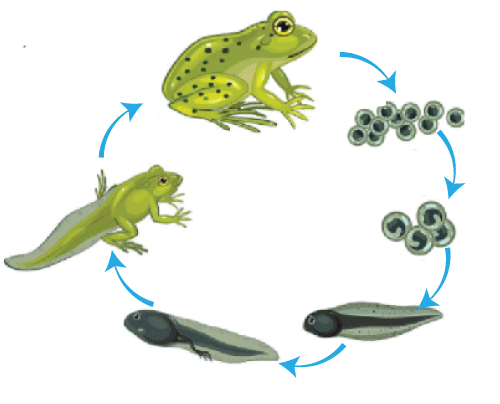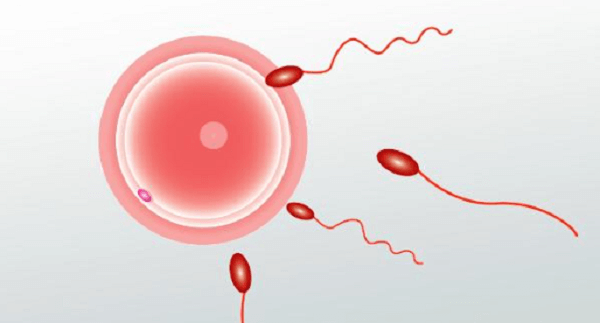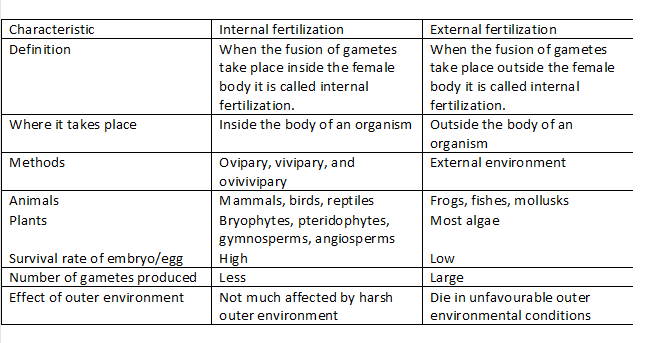Difference Between Internal and External FertilizationThe two mechanisms that contribute to the fusion of male and female gametes are internal fertilization and external fertilization. One of the last stages of sexual reproduction, fertilization, is what creates the zygote. As it grows, the zygote becomes a new organism. Internal and external fertilization differ primarily in that internal fertilization takes place inside the female organism, whereas external fertilization takes place outside the female organism. The three types of internal fertilization are oviparity, viviparity, and ovoviviparity. Mammals, reptiles, some birds, and some fish are capable of internal fertilization. Frogs, fish, molluscs, and crustaceans all use external fertilization. Compared to external fertilization, internal fertilization has higher embryo survival rates. 
External Fertilization In aquatic conditions where both eggs and sperm are dispersed into the water, external fertilization typically takes place. Fertilization occurs after the sperm contacts the eggs. The time of external fertilization is the spawning phase. At this time, most of the males release their sperm, and similarly, most of the females release eggs. Both the release of sperm and eggs occur simultaneously at the same location to ensure successful fertilization takes place. The syncing of the release of eggs and sperm may be caused due to the change in temperature or the amount of daylight, which causes the discharge of reproductive cells. The animals which show the phenomenon of spawning are almost all fishes, molluscs, crustaceans, squid, and echinoderms. Fish pairs that don't broadcast spawn occasionally engage in courtship activity. This enables the female to choose a specific male. The act of spawning, which initiates the release of eggs and sperm, concentrates them in a restricted space, increasing the likelihood of fertilization. The eggs are shielded from drying out in an aquatic environment by external fertilization. Broadcast spawning can produce a more diverse mix of genes within a population, increasing genetic diversity and the likelihood that a species would survive in unfavourable conditions. Broadcast spawning is the only method for fertilization and colonization of new settings for sessile aquatic animals like sponges. The fertilized eggs and growing young present in the water create opportunities for predation, which leads to the loss of offspring. As a result, each individual must generate millions of eggs, and the offspring created by this process must mature quickly. Eggs produced through broadcast spawning have a low rate of survival. A given species' genetic diversity increases as a result of spawning. Spawning is the sole way for some sessile creatures, like sponges, to colonize a new environment. The loss of offspring in external fertilization is due to predation. However, external fertilization results in the production of a huge number of offspring. When reproducing sexually, some algae may use external fertilization. Internal Fertilization Although certain aquatic species also employ this technique, land animals use internal fertilization the majority of the time. After internal fertilization, offspring can be created in three different ways. In the case of oviparity, the eggs are kept outside the female body. The eggs receive their nutrition from egg yolk and develop in that environment only. Animals exhibiting this type of fertilization include numerous reptiles, some bony fishes, some cartilaginous fishes, most amphibians, all birds, and two mammals. Insects and reptiles produce leathery eggs. On the other hand, eggs produced by birds and turtles contain lots of calcium carbonate in their shells, which makes their eggs quite hard. An example of a calcium carbonate-rich egg is the chicken's egg. 
In ovoviviparity, the embryo remains inside the mother, but it is nourished by the yolk of the egg. Some species of snakes, lizards, bony fish, sharks, and invertebrates are oviparous. The newborn organism emerges from the egg upon hatching. In viviparity, the embryo develops into a fetus inside the female organism. The developing fetus is nourished by the mother's blood through the placenta. Viviparous animals include most mammals, a few reptiles, and cartilaginous fish. Figure 2 depicts internal fertilization in humans. In viviparity, the offspring grows inside the mother while being nourished by her blood through the placenta. The offspring develops inside the mother and is born alive. Examples of animals that exhibit this type of fertilization include most mammals, a few reptiles, and some cartilaginous fish. The most significant advantage of internal fertilization over external fertilization is that it protects the egg from dehydration. On land, eggs are at risk of drying up, but this does not occur in vivipary. Another advantage is protection. Since the embryo is inside the female parent, it is shielded from various environmental challenges, such as predation. It is also known that internal fertilization improves the fertilization of eggs by a particular male. This approach results in fewer offspring, but their survival rate is higher than it would be with external fertilization. The main benefit of internal fertilization is that it prevents the embryo from dehydrating on the ground. The embryo's confinement inside the mother also protects the young from predators. In internal fertilization, the sperm originates from a particular male. Internal fertilization has a greater survival rate than external fertilization, but it produces fewer offspring. Key Differences
The main difference between internal and external fertilization is the location of fertilization. In internal fertilization, fertilization occurs inside the body of the female, while in external fertilization, fertilization occurs outside the body of the partner. Another key difference is the level of parental care. Internal fertilization typically requires more parental care, as the developing embryo is inside the female's body and requires nutrients and protection until it is born or hatches. In external fertilization, there is often little to no parental care, and the survival rate of the offspring is much lower. Finally, internal fertilization typically produces fewer offspring but has a higher survival rate, while external fertilization can produce a large number of offspring, but many do not survive. ConclusionInternal and external fertilization are two different mechanisms by which organisms reproduce. Internal fertilization occurs inside the body of one of the partners and is common in mammals, birds, reptiles, and some fish. External fertilization occurs outside the body of the partners and is common in aquatic animals such as fish, amphibians, and some invertebrates. While both types of fertilization have advantages and disadvantages, they both play a crucial role in maintaining biodiversity and ensuring the survival of different species.
Next TopicDifference between
|
 For Videos Join Our Youtube Channel: Join Now
For Videos Join Our Youtube Channel: Join Now
Feedback
- Send your Feedback to [email protected]
Help Others, Please Share










